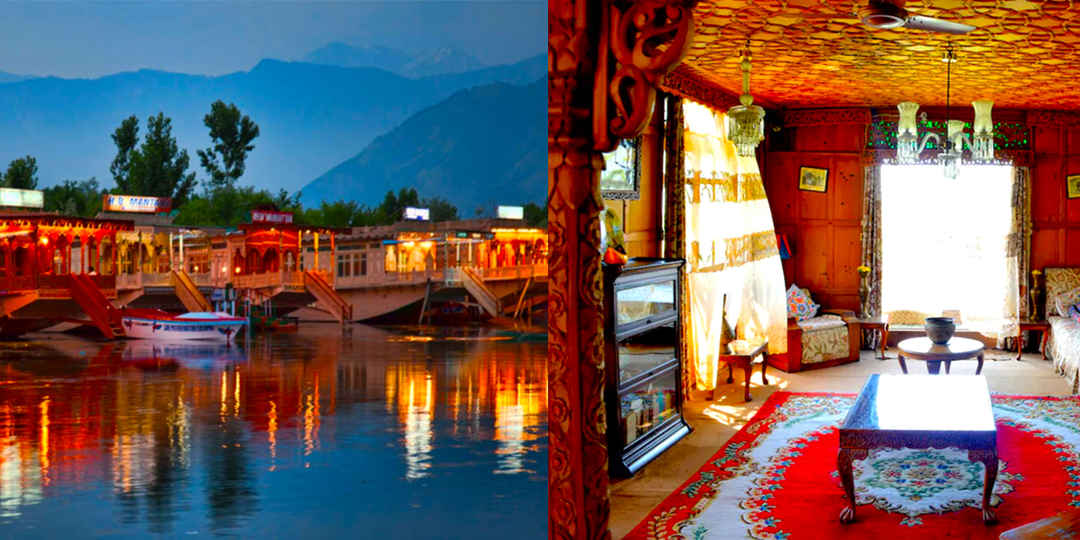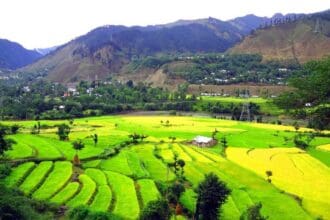Drass, often referred to as the “Gateway to Ladakh,” is a picturesque town located in the Kargil district of Jammu and Kashmir. Nestled at an altitude of approximately 10,760 feet above sea level, Drass is one of the coldest inhabited places in the world. Known for its breathtaking landscapes, rich history, and unique culture, Drass offers travelers an unforgettable experience. In this article, we will explore the top 5 places to visit in Drass , providing you with detailed insights, practical tips, and fascinating stories that make this destination truly remarkable.
1. Drass War Memorial: A Tribute to Bravery
Drass War Memorial , also known as the Kargil War Memorial , is one of the most significant landmarks in Drass. Built to honor the brave soldiers who lost their lives during the 1999 Kargil War, this memorial stands as a symbol of courage, sacrifice, and patriotism.
The Historical Significance
The Kargil War was a turning point in India’s military history, and the Drass sector played a crucial role in the conflict. The memorial features a sandstone wall inscribed with the names of all the soldiers who made the ultimate sacrifice during the war. It also includes a museum that showcases photographs, letters, and personal belongings of the soldiers, offering visitors a poignant glimpse into their lives.
The Architecture and Design
The centerpiece of the memorial is a massive national flag fluttering atop a 30-foot-high pole, visible from miles away. Surrounding the flagpole are pathways lined with granite plaques that narrate the events of the war. Each plaque provides a detailed account of the battles fought in the region, along with maps and timelines. The serene ambiance of the memorial makes it a place of reflection and gratitude.
The Role of the Indian Army
The Indian Army played a pivotal role in recapturing strategic locations like Tiger Hill and Tololing during the Kargil War. The memorial pays tribute not only to the soldiers who lost their lives but also to the countless others who risked everything to defend the nation. Visitors can learn about the challenges faced by the troops, including extreme weather conditions, high-altitude warfare, and logistical hurdles.
Best Time to Visit
The best time to visit the Drass War Memorial is between May and September when the weather is relatively mild. Early mornings and late afternoons are ideal for photography, as the golden hues of the sun create a solemn atmosphere. During winter, the memorial remains accessible, but temperatures can plummet to sub-zero levels, making it challenging for visitors.
“The Drass War Memorial is not just a tribute to heroes; it’s a reminder of the sacrifices made to protect our freedom.”
2. Tiger Hill: A Strategic Vantage Point
Tiger Hill , located about 10 kilometers from Drass, is a strategic vantage point that played a pivotal role during the Kargil War. This hill offers panoramic views of the surrounding valleys and snow-capped peaks, making it a must-visit destination for history enthusiasts and nature lovers alike.
The Battle of Tiger Hill
Tiger Hill was one of the most fiercely contested areas during the Kargil War. Indian soldiers fought valiantly to recapture this strategic location from enemy forces, enduring extreme weather conditions and challenging terrain. The battle lasted for several weeks, with both sides suffering heavy casualties. Today, remnants of bunkers and trenches can still be seen, serving as a testament to the bravery of the armed forces.
Exploring the Scenic Beauty
Despite its historical significance, Tiger Hill is also renowned for its natural beauty. Visitors can enjoy breathtaking views of the Drass Valley, Zoji La Pass, and the majestic Himalayan ranges. During winter, the hill is covered in snow, creating a surreal landscape that attracts photographers and adventurers. The view of the sunrise over the snow-clad peaks is particularly mesmerizing.
Things to Do at Tiger Hill
Guided tours are available, providing detailed accounts of the battles fought here. For those interested in trekking, there are several trails leading to nearby peaks that offer even more stunning vistas. Don’t forget to carry warm clothing, as temperatures can drop significantly even during summer. Additionally, binoculars and cameras are essential for capturing the panoramic views and spotting wildlife such as ibex and marmots.
Tips for Visitors
It’s advisable to visit Tiger Hill during daylight hours and avoid venturing too close to the edge of cliffs. The terrain can be uneven and slippery, especially during monsoon season. Hiring a local guide is recommended for those unfamiliar with the area.
3. Mushkoh Valley: A Paradise for Nature Lovers
Mushkoh Valley , often referred to as the “Valley of Flowers,” is a hidden gem located near Drass. Surrounded by towering mountains and lush meadows, this valley is a paradise for nature lovers and adventure seekers.
The Natural Splendor
The valley is home to a diverse range of flora and fauna, including rare species of wildflowers, medicinal herbs, and migratory birds. During spring and summer, the meadows burst into a riot of colors as flowers like blue poppies, primulas, and gentians bloom in abundance. The vibrant hues of these flowers contrast beautifully against the backdrop of snow-covered peaks.
Adventure Activities
Mushkoh Valley is a popular destination for trekking, camping, and birdwatching. Several trekking routes lead to nearby glaciers and high-altitude lakes, offering thrilling experiences for outdoor enthusiasts. Camping under the starlit sky amidst the tranquil surroundings is an experience like no other. The valley is also a haven for photographers, who can capture the interplay of light and shadow on the mountains during sunrise and sunset.
Cultural Insights
The valley is also home to small settlements of nomadic tribes such as the Bakarwals, who graze their livestock here during the summer months. Interacting with these communities provides valuable insights into their traditional way of life and cultural practices. Visitors can witness activities such as sheep herding, wool spinning, and cheese-making, which have been passed down through generations.
Best Time to Visit
The best time to visit Mushkoh Valley is from June to September when the snow melts, and the meadows come alive with flowers. Winter visits are possible but require proper gear and preparation due to harsh weather conditions.
4. Dras River: A Serene Escape
Dras River , originating from the glaciers of the Himalayas, flows through the heart of Drass, adding to the town’s charm. The river is a lifeline for the local population, supporting agriculture, livestock, and daily activities.
Exploring the Riverside
The banks of the Dras River are perfect for leisurely walks and picnics. Visitors can enjoy the soothing sound of flowing water while taking in the scenic views of the surrounding mountains. During winter, the river freezes partially, creating a magical icy landscape. The frozen sections of the river are often used by locals for ice skating and sledding.
Fishing and Adventure
The Dras River is home to trout and other freshwater fish, making it a popular spot for anglers. Fishing permits are available, and local guides can assist visitors in finding the best fishing spots. Additionally, the river offers opportunities for rafting and kayaking, though these activities require prior experience and proper safety gear. The rapids vary in difficulty, catering to both beginners and experienced rafters.
Tips for Visitors
It’s advisable to visit the river during daylight hours and avoid venturing too close to the water during peak monsoon season when the flow becomes stronger. Carry waterproof gear if you plan to engage in water-based activities. For those interested in fishing, lightweight rods and artificial lures work best for catching trout.
5. Amarnath Yatra Route via Baltal: A Spiritual Journey
Amarnath Yatra , one of the most sacred pilgrimages in Hinduism, passes through the picturesque route of Baltal, which is accessible from Drass. Every year, thousands of devotees undertake this arduous journey to pay homage to the ice lingam at the Amarnath Cave.
The Pilgrimage Experience
The Amarnath Cave, located at an altitude of 12,756 feet, houses a naturally formed ice stalagmite that represents Lord Shiva. The yatra via Baltal is shorter but more challenging compared to the Pahalgam route, requiring physical fitness and mental resilience. Pilgrims often describe the journey as a test of endurance and devotion.
Scenic Beauty Along the Route
The Baltal route passes through some of the most stunning landscapes in the region, including dense forests, alpine meadows, and glacial streams. Trekkers are accompanied by the melodious chirping of birds and the gentle rustling of leaves, creating a serene atmosphere. The sight of snow-capped peaks and cascading waterfalls adds to the spiritual experience.
Preparation for the Yatra
Pilgrims are required to register for the yatra and undergo medical check-ups to ensure they are fit for the journey. Proper clothing, sturdy footwear, and essential supplies such as food, water, and first-aid kits are mandatory. Porters and ponies are available for hire to assist with luggage and transportation. Helicopter services are also available for those unable to trek the entire distance.
Challenges and Rewards
The journey to Amarnath Cave is physically demanding, with steep ascents and unpredictable weather conditions. However, the sense of accomplishment upon reaching the cave and witnessing the ice lingam is unparalleled. Many pilgrims describe the experience as transformative, deepening their faith and connection with nature.
Conclusion
Drass is a destination that captivates the hearts of all who visit. From the solemnity of the Drass War Memorial to the serenity of Mushkoh Valley, each place tells a story of resilience, beauty, and harmony. Whether you’re seeking adventure, spirituality, or cultural immersion, the top 5 places to visit in Drass promise an enriching experience.
“Drass is more than just a travel destination; it’s a journey into the soul of the Himalayas.”
As you plan your trip, remember to respect the local customs and traditions. Engage with the people, savor the flavors, and immerse yourself in the vibrant tapestry of Drass’s life. Your visit to Drass will undoubtedly leave you with memories to cherish for a lifetime.
FAQs
- What is the best time to visit Drass?
The best time to visit Drass is from June to September when the weather is relatively mild and roads are accessible. - How do I reach Drass?
Drass is well-connected by road from Srinagar and Leh. The nearest airport is in Srinagar, approximately 140 kilometers away. - Are there any entry fees for visiting Tiger Hill?
No, there are no entry fees for visiting Tiger Hill, but guided tours may have nominal charges. - Can I camp in Mushkoh Valley?
Yes, camping is allowed in Mushkoh Valley, but it’s advisable to hire local guides for safety and convenience. - Is the Dras River safe for swimming?
Swimming in the Dras River is not recommended due to strong currents and cold water temperatures. - What should I pack for the Amarnath Yatra?
Essential items include warm clothing, sturdy shoes, food, water, a first-aid kit, and trekking gear. - Are guided tours available for the Drass War Memorial?
Yes, guided tours are available, providing detailed insights into the history and significance of the memorial. - What are some must-try dishes in Drass?
Some must-try dishes include thukpa (noodle soup), momos, and butter tea, along with local breads like baati. - Is Drass safe for solo travelers?
Drass is generally considered safe for solo travelers, but it’s always advisable to stay cautious and informed. - Where can I stay in Drass?
Drass offers a range of accommodations, from guesthouses to budget hotels, catering to different preferences.















amoxicillin us – buy generic amoxicillin over the counter cheap amoxicillin pill
cost diflucan 100mg – https://gpdifluca.com/ buy forcan generic